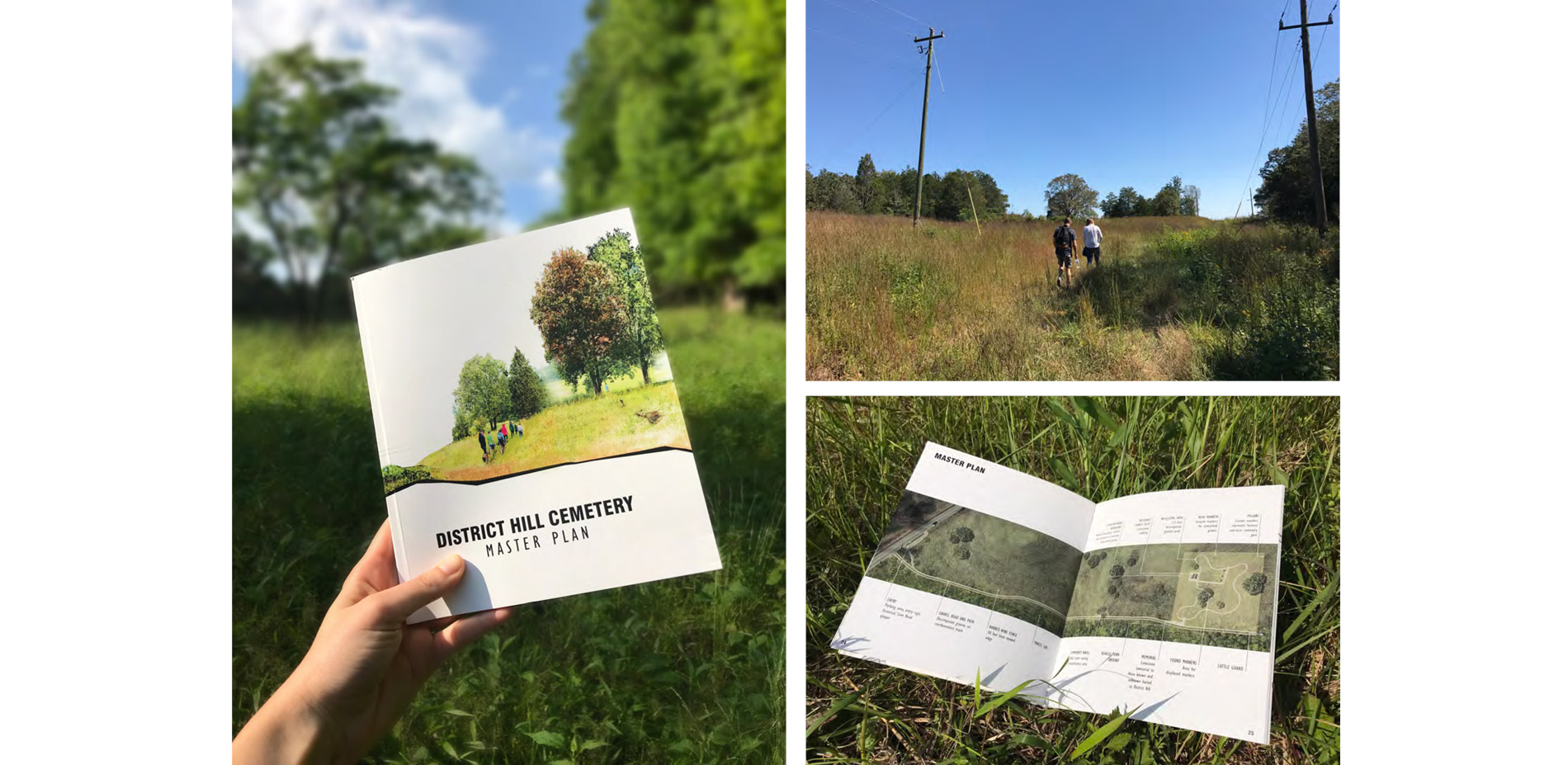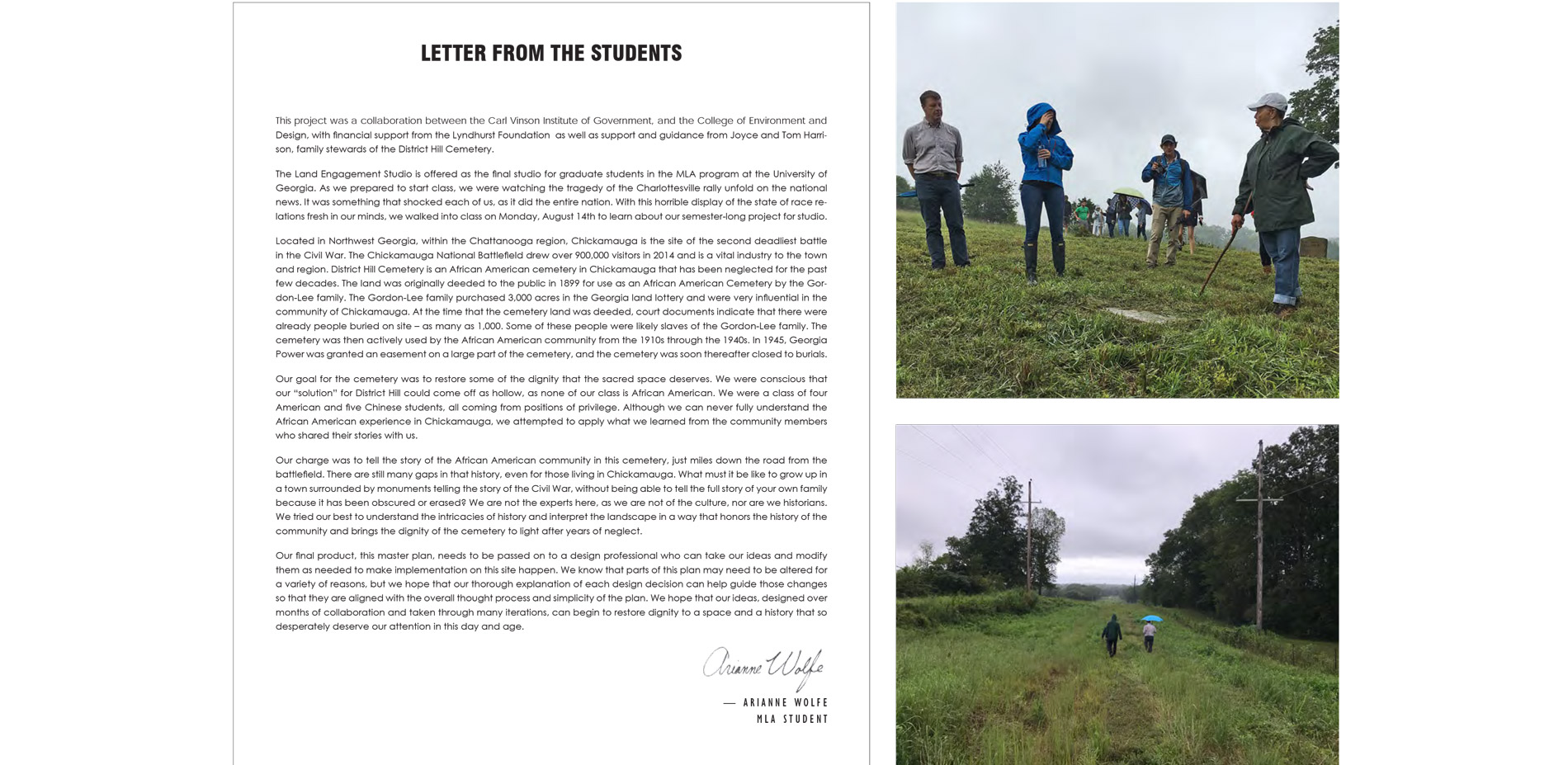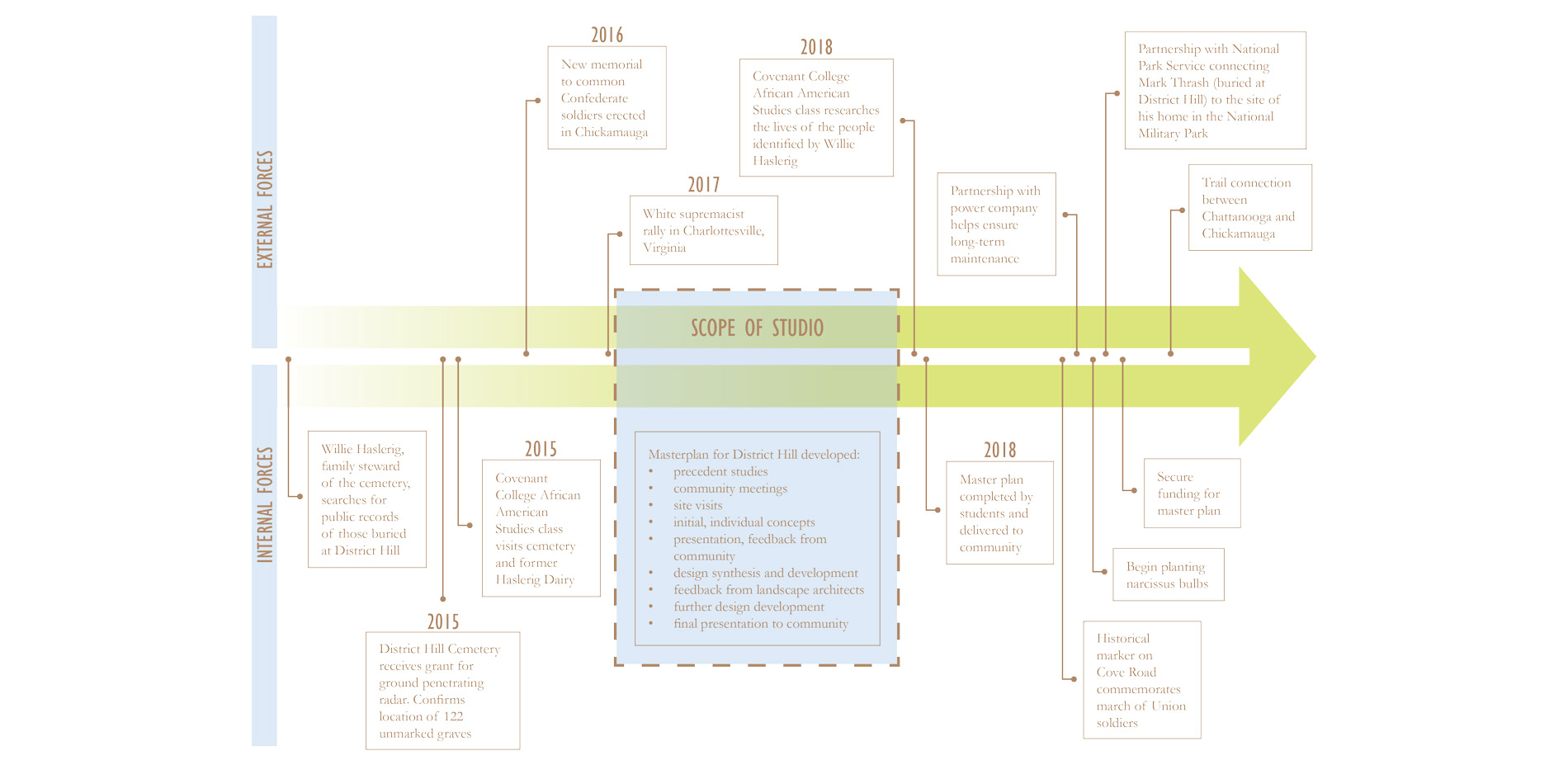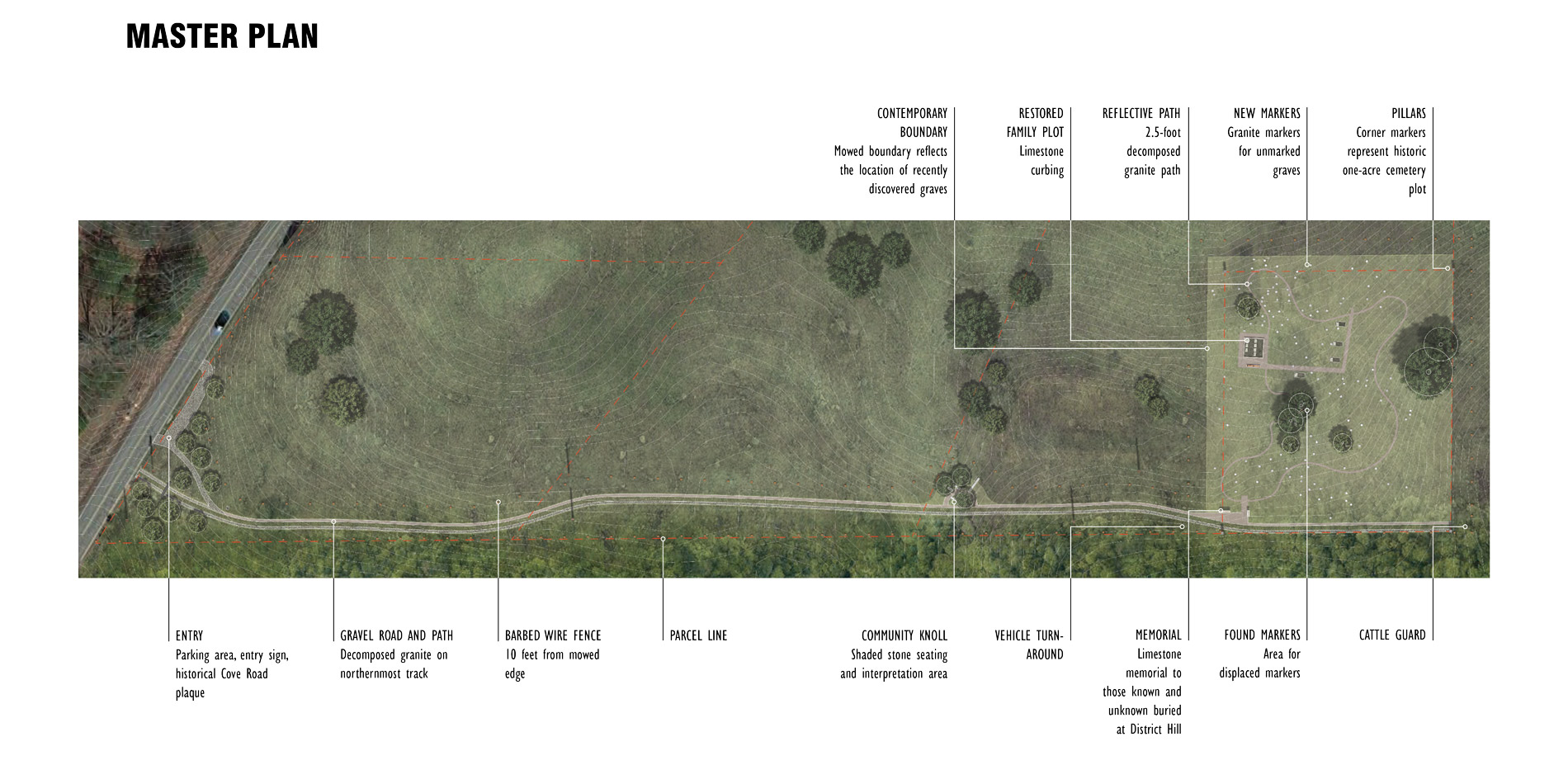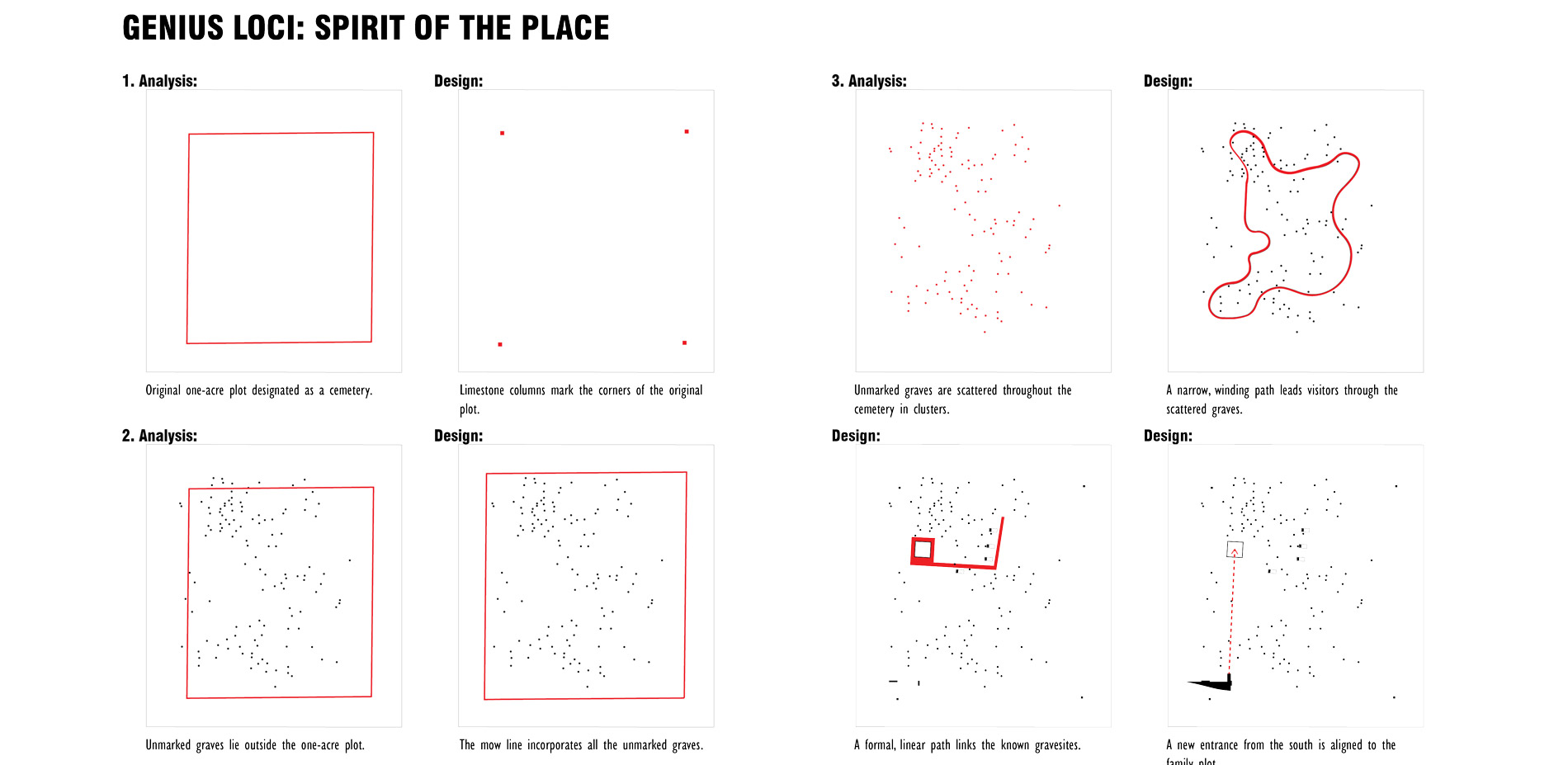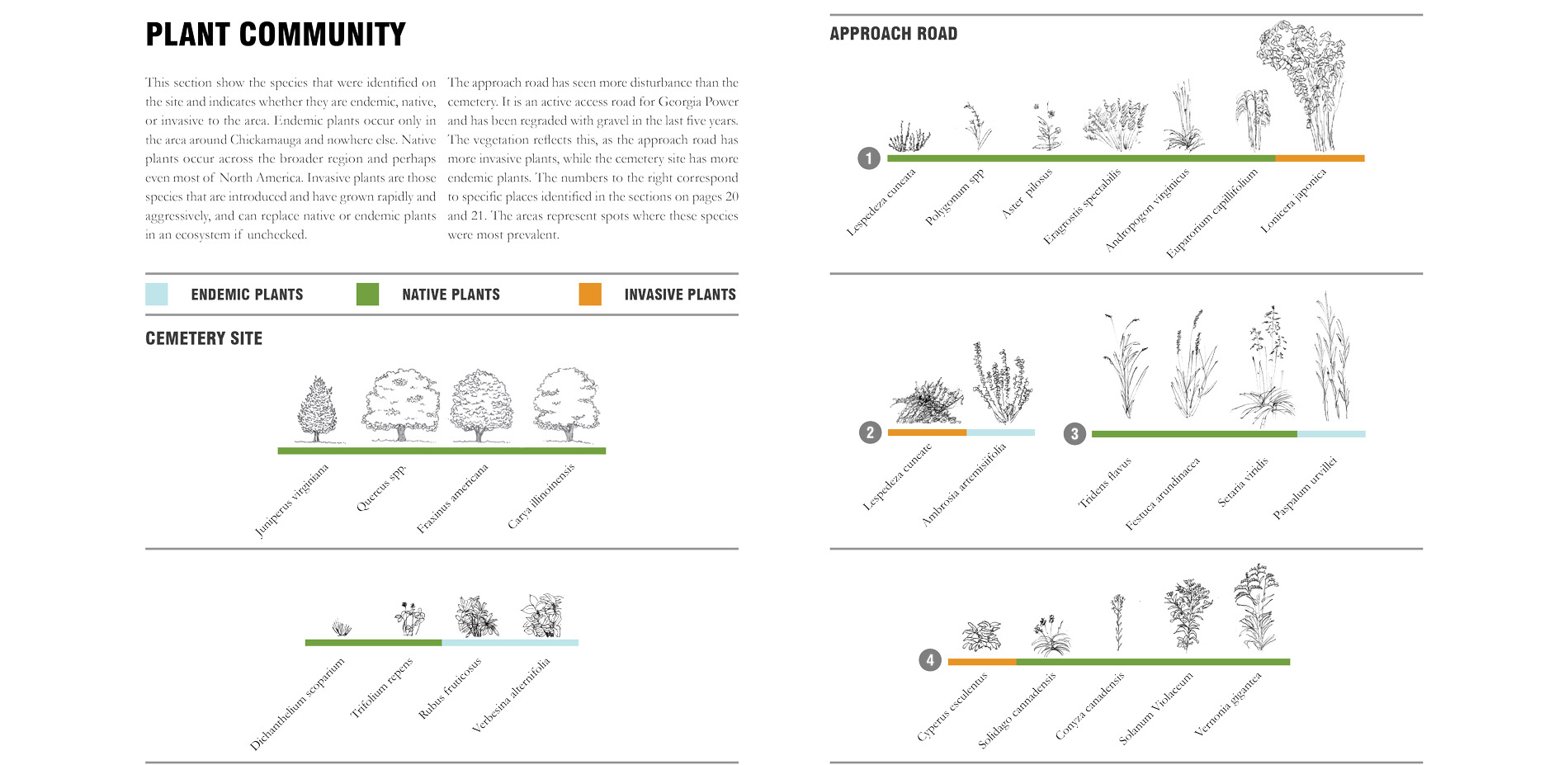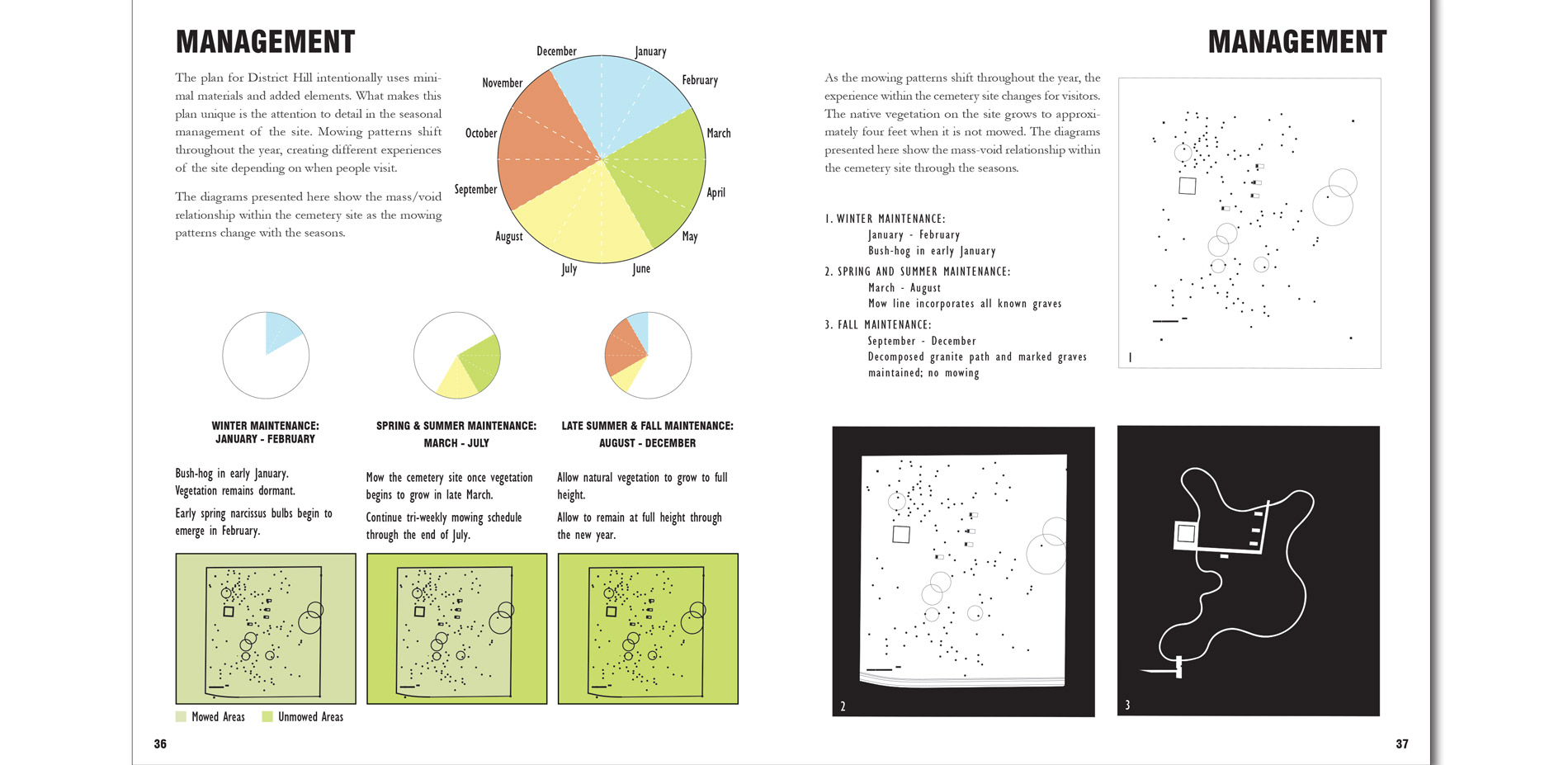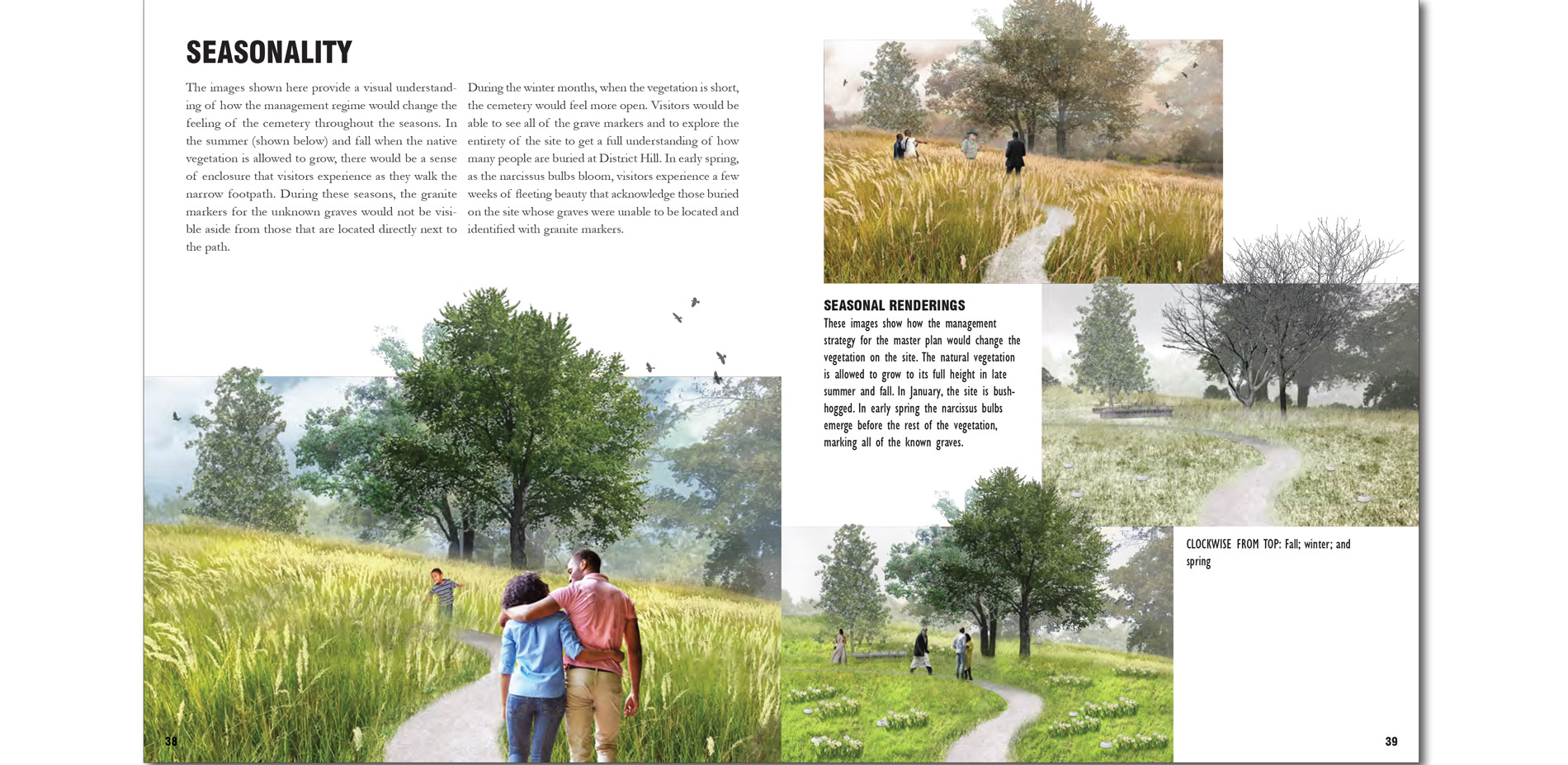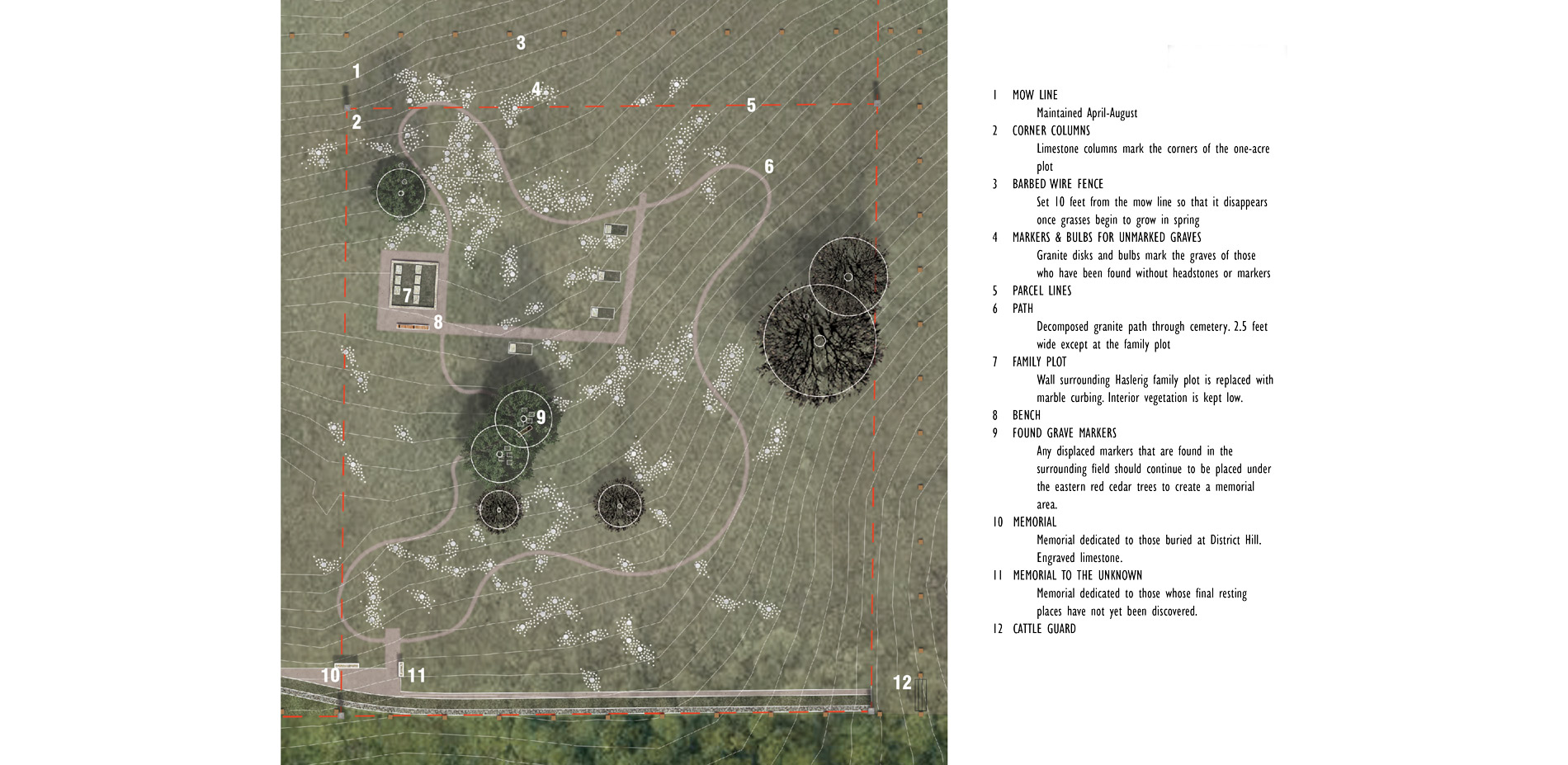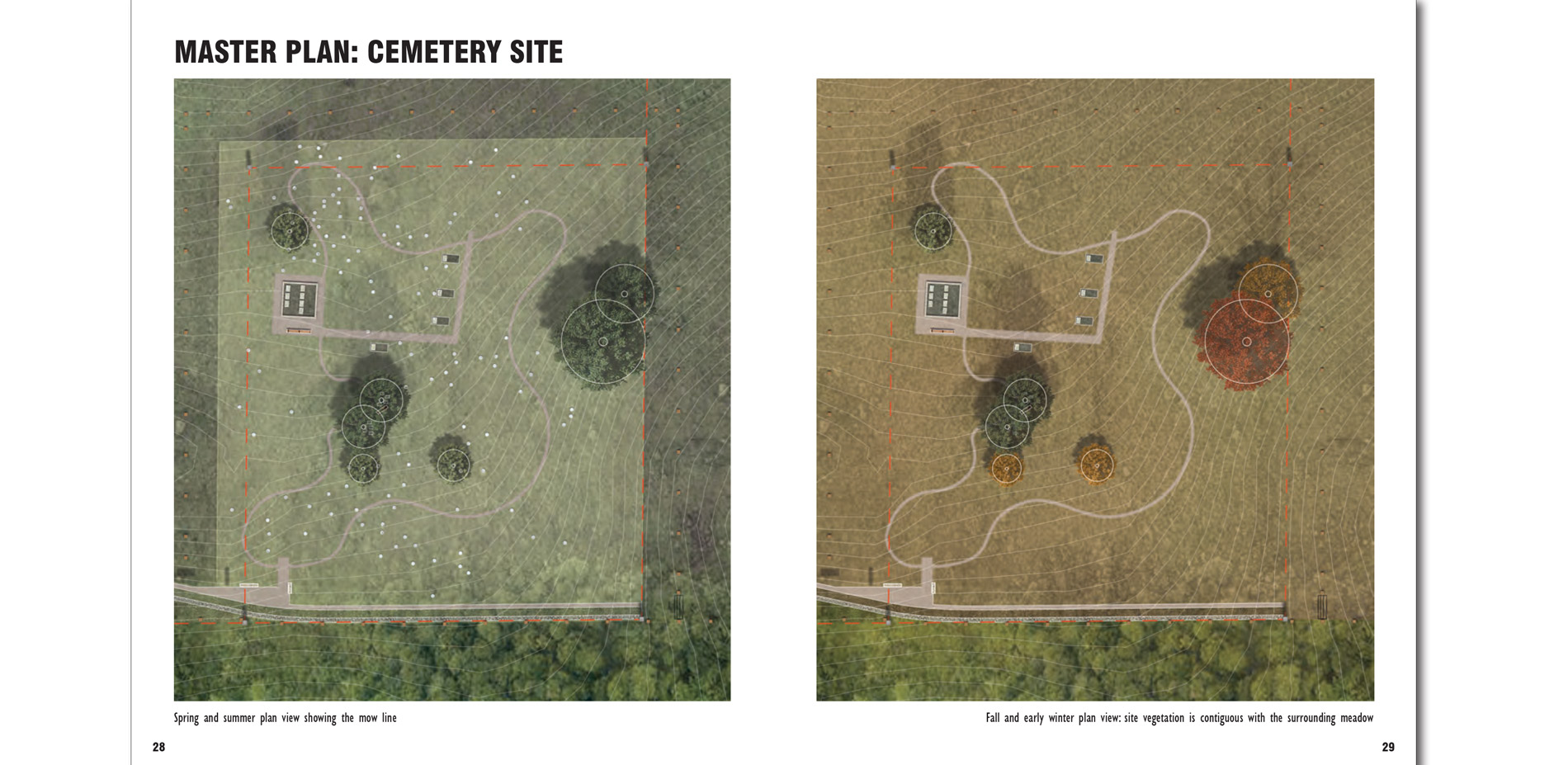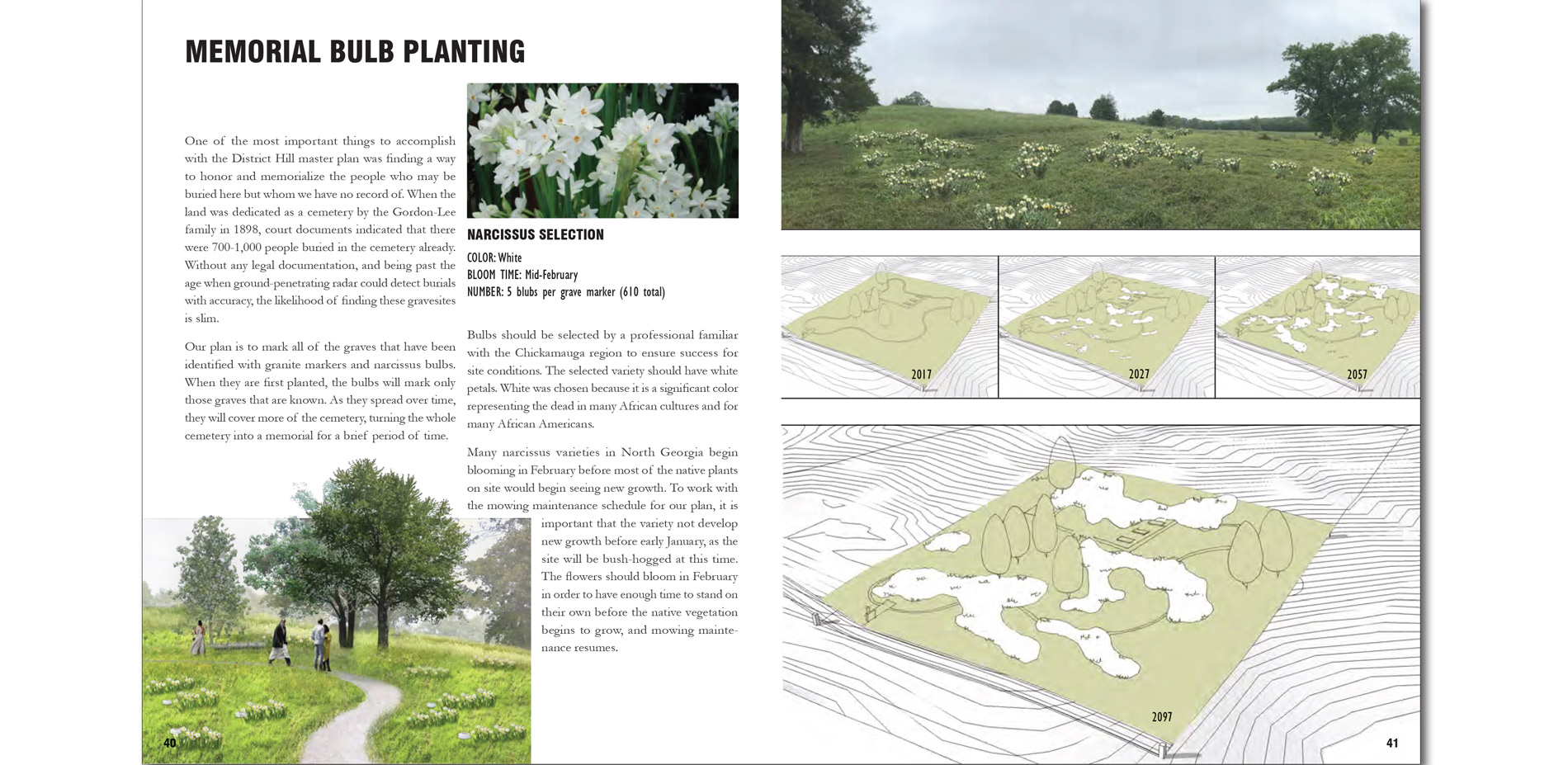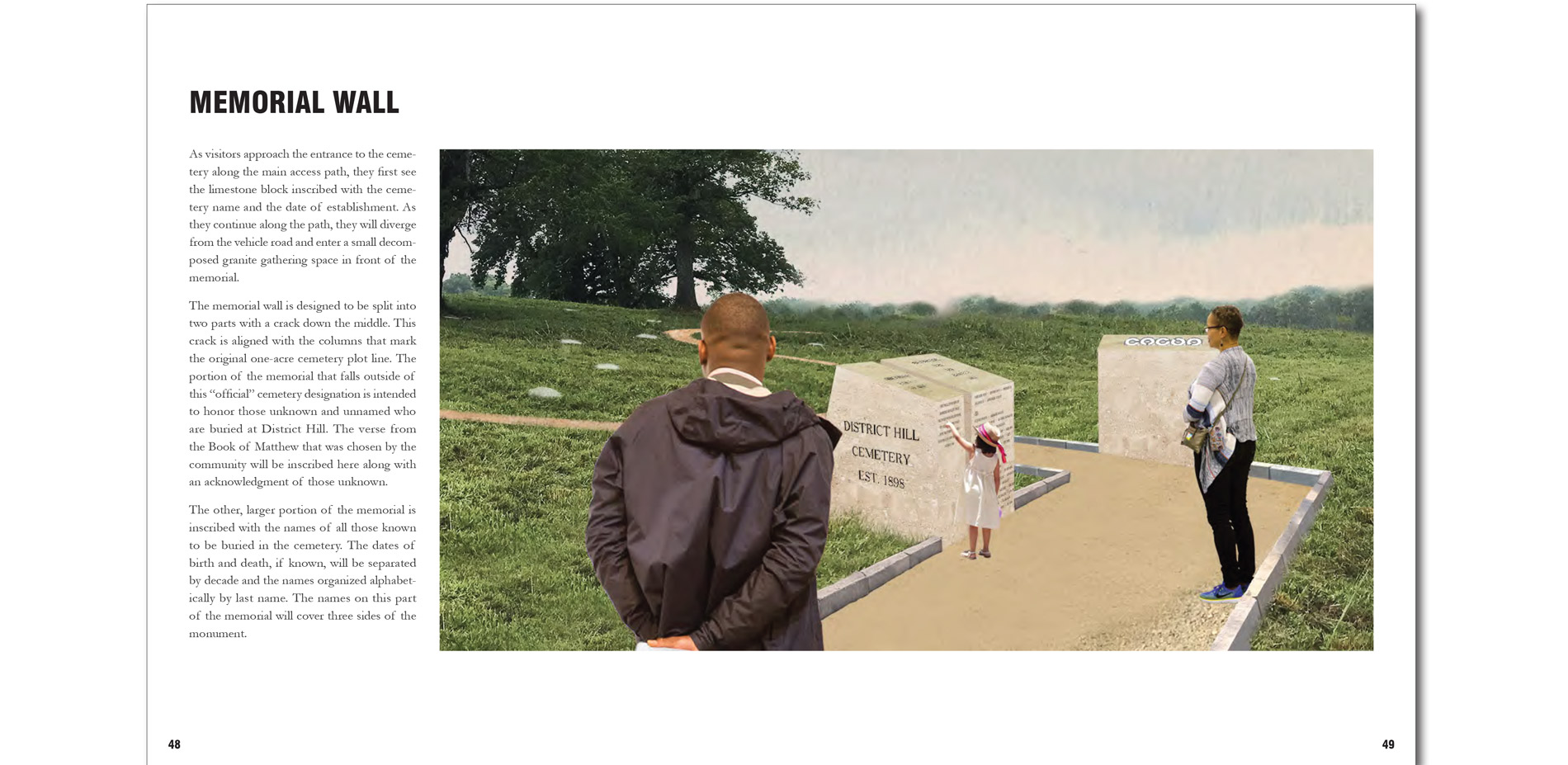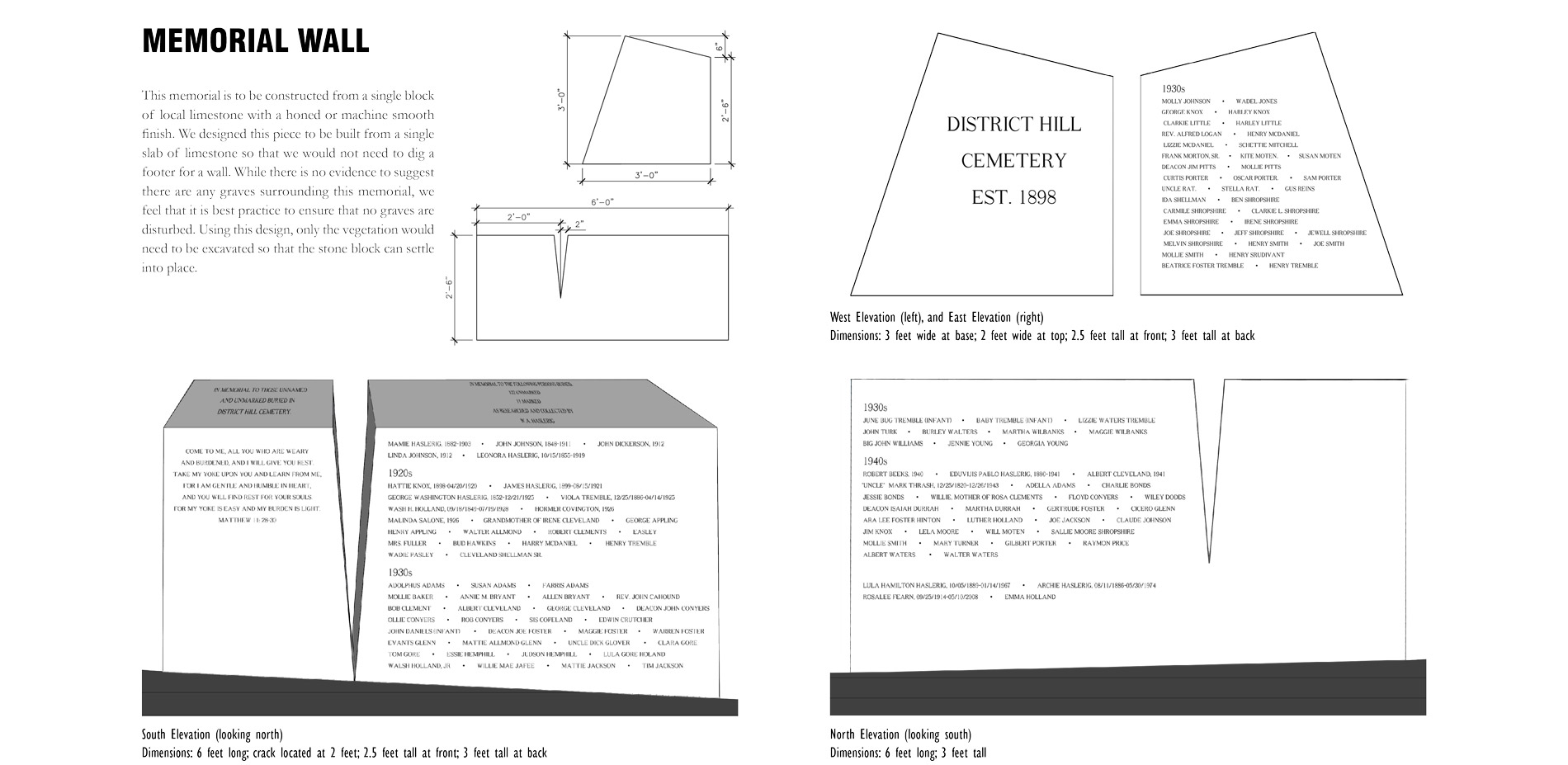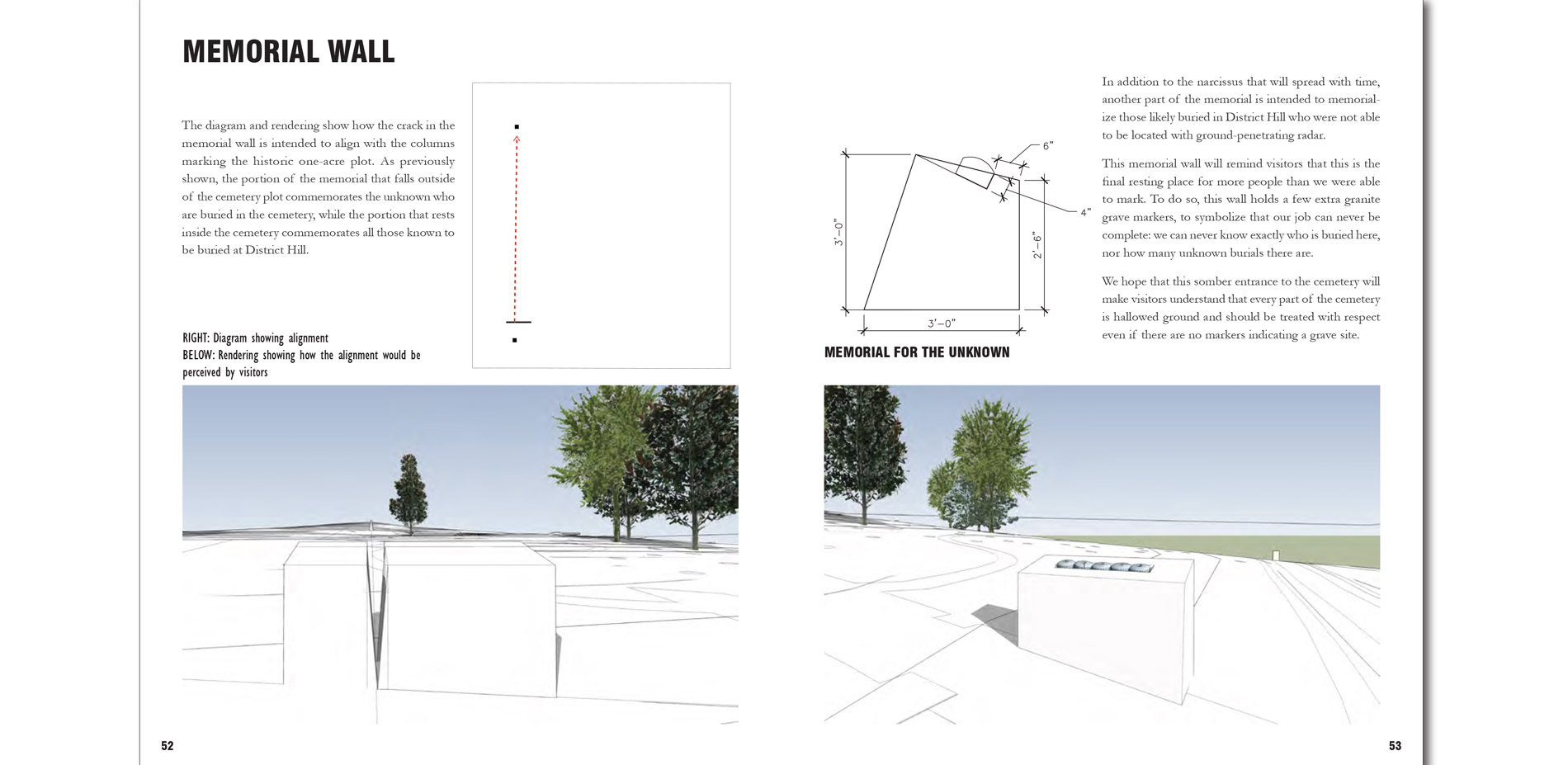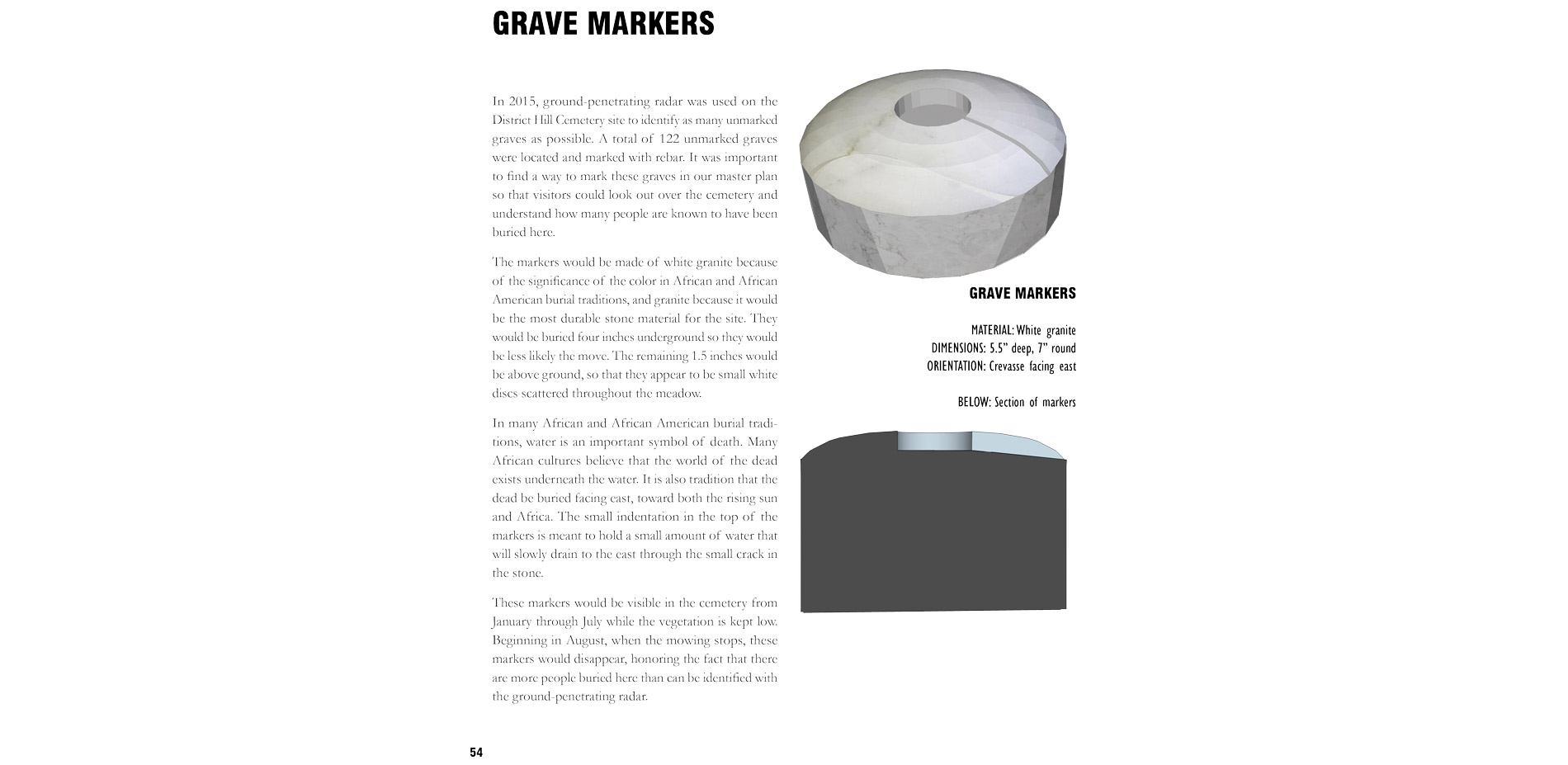District Hill Cemetery Master Plan
HONOR AWARD
Communications
Chickamauga, GA, USA | Team: Arianne Wolfe, Student ASLA, Devyn Quick, Student ASLA | Faculty Advisors: Douglas Pardue, ASLA
University of Georgia
It was a document that very clearly explained to a community the role of a landscape architect in historic preservation and commemoration.
- 2018 Awards Jury
PROJECT CREDITS
Studio Participants:
- Li Fu
- Ming Guan
- Chen Qu
- Carter Ricks
- Landon Woodward
- Yuwen Yang
- Ran Zhang
Community Advisors:
- Tom and Joyce Harrison
Sponsors:
- The Lyndhurst Foundation
- Thrive Regional Partnership
- Georgia Municipal Association
- Georgia Cities Foundation
Publication Advisors:
- Danny Bivins, Senior Public Service Associate, Carl Vinson Institute of Government
- Kaitlin Messich, Senior Designer, Carl Vinson Institute of Government
- T. Clark Stancil, Creative Design Specialist, Carl Vinson Institute of Government
- Dan Shinkle, Creative Design Specialist, Carl Vinson Institute of Government
- Karen DeVivo, Editor, Carl Vinson Institute of Governement
- Melissa Tufts, Director of Owens Library and Circle Gallery, College of Environment and Design
Consultant:
- Matt Whitaker, ASLA
- Published by the University of Georgia Carl Vinson Institute of Government
PROJECT STATEMENT
District Hill Cemetery in the town of Chickamauga, Georgia is the historic resting place for the community's African American population. While many people recognize Chickamauga as the site of second deadliest Civil War battle, it was also home to numerous enslaved people and their descendants, many of whom are buried at District Hill.
To this day, the stories of formerly enslaved people and their descendants interred at District Hill go untold, forgotten by all but a handful of local residents, and the gravesites lie neglected and inaccessible. What little is known has been preserved by dedicated members of the African American community, but the cemetery faces long-term funding and maintenance challenges that further imperil this landscape.
In the fall of 2017, graduate students from the University of Georgia's College of Environment and Design developed a plan to preserve and maintain the cemetery. The District Hill Cemetery Master Plan provides a tool that articulates the importance of District Hill and its people, restoring dignity to the known and unknown souls buried at this sacred site.
PROJECT NARRATIVE
INTRODUCTION
District Hill Cemetery occupies a hillside 800 feet from Cove Road, surrounded by private land, and accessible via a power company easement road. Only the most dedicated local historians and community members are aware of District Hill Cemetery at all. Tom and Joyce Harrison, prominent Chickamauga citizens, own much of the land surrounding the cemetery, and for decades they have served as its stewards. The Harrisons' care and advocacy— a mantle accepted from Joyce Harrison's father, Willie Haslerig—continues to attract wider attention to this site. Armed with a storehouse of knowledge and seemingly limitless drive, the Harrisons have strived to create a plan that acknowledges and celebrates the lives of the people buried at District Hill while also making the site more accessible. In the fall of 2017, the University of Georgia College of Environment and Design (CED) began working with the Harrisons to develop a plan for District Hill Cemetery. Over the next four months, the Master of Landscape Architecture Land Engagement Studio, under the direction of Professor Doug Pardue, met with community members, stakeholders, and design professionals. In December 2017, the nine studio participants presented the final plan to the community at the Chickamauga Public Library. Work on the final planning document continued into the following semester, with project details finalized and information compiled into the resulting District Hill Cemetery Master Plan. In March of 2018, 100 copies of the master plan were given to the Harrisons and other community members. In April of 2018, a digital version of the plan was uploaded to the internet to allow continued public access to the final document (issuu.com/districthillcemetery).
CONTEXT
Nestled in the scenic Ridge and Valley region of Northwest Georgia Chickamauga has attracted settlers and visitors for centuries. Once a Cherokee settlement, the town of Chickamauga offers its 3,100 residents a beautiful slice of small town life just 30 miles from Chattanooga, TN.
In 1863, Chickamauga gained infamy as the site of the second deadliest Civil War battle. Mark Thrash, a slave pressed into service to help bury the 34,o00 dead, recalled that he "could walk a mile on dead bodies." Thrash, an important community member and caretaker of the former battlefield, lived at the park until 1943. His first-hand accounts inspired many visitors to learn the history of Chickamauga. Today, the Chickamauga & Chattanooga National Military Park, the first and largest military park in the nation, preserves 5,300 pastoral acres at the once ravaged battlefield. This site draws nearly one million visitors to the area each year. Local streets are named for Confederate generals and there are several monuments throughout town that herald its history and role in the Civil War. In November of 2016, the city unveiled a new monument commemorating the common Confederate soldier on the grounds of the city-owned Gordon-Lee house, the imposing antebellum mansion of prominent early settler James Gordon.
But in a landscape steeped in history, District Hill Cemetery and the African American experience rests largely forgotten. The cemetery and the stories of those buried there provide another layer of history. People interred at District Hill Cemetery were members of the African American community of Chickamauga. When the cemetery was dedicated by the Gordon-Lee family in 1898, court documents indicated that 700-1,000 people were already buried at the site. Without a definitive record of burials on-site, and being past the age when ground-penetrating radar can detect them with accuracy, the likelihood of finding these gravesites is slim. Many of the people buried in District Hill's mostly unmarked graves were likely enslaved at the time of their birth and lived through Emancipation, Reconstruction, and the Jim Crow Eras. Burials include prominent African American citizens, including Mark Thrash. These were the teachers and laborers, Freemasons and farmers, preachers and business owners that created a vibrant community in Chickamauga. In a town whose identity remains tied to the Civil War, this landscape provides an opportunity to see the community through a different but equally important lens. By telling a broader and deeper story, the landscape of District Hill offers Chickamauga's white and black populations the opportunity to memorialize those who bore the burden of building the community.
PREVIOUS RESEARCH
The District Hill Cemetery Master Plan is among the most recent in a series of projects to preserve District Hill Cemetery and communicate the story and significance of the site. Beginning in the 1990s, Willie Haslerig began to research the identities of those buried at the cemetery. Since 1946 the site has been closed to the public. Grazing cattle and possible vandalism have taken their toll and many grave markers are lost. By the 1990s, only 11 intact markers existed at District Hill. Despite these challenges, Haslerig successfully researched and uncovered the identities of 110 people interred at District Hill. In 2015, the Harrisons secured a grant from the Georgia Civil War Commission to conduct ground-penetrating radar on-site. This process revealed the location of 122 unmarked gravesites.
MASTER PLAN
The District Hill Cemetery Master Plan was created to communicate the story of this sacred site to a broad audience. For the Chickamauga community, the plan communicates the story of District Hill, outlines the design process, and proposes the final master plan created by the CED studio. The document communicates the design through renderings and imagery in addition to supporting explanatory text, design specifications, and cost estimates. By distributing this document to potential donors, the Harrisons and local stakeholders hope to generate the investment necessary to preserve the site and implement the vision included in the final document. For design professionals, the District Hill Cemetery Master Plan provides all of the information necessary to produce construction documents for the site. The design intention and the final plan together allow room for flexibility in future implementation.
District Hill itself boasts a serene and bucolic rural setting with pastoral fields, limestone outcrops, and diverse Southern forestation. Visiting the site, one feels a sense of calm and contemplation. In all their efforts, the designers tried to preserve and incorporate the peaceful, reflective nature of this sacred ground into a plan for the cemetery.
The most demanding challenge of this project was identifying currently unmarked graves and communicating the fact that there are likely hundreds more burials on-site than have been verified. The student designers took deliberate care to create a plan that imparts a sense of dignity to the site and also provides a refuge for contemplation. In the final plan, known graves are marked with both simple stone markers and narcissus bulbs. While stone markers provide a static memorial that remains largely unchanged over time, the narcissus will naturalize and spread over generations. This slow process of growth and naturalization reflects the existence of the hundreds of additional unverified gravesites at District Hill Cemetery. For a few weeks in early spring the narcissus flowers will bloom, covering the hillside in white blossoms. As they naturalize and spread, these flowers will reveal the landscape's sacred nature and invoke its untold story.
This simple yet poetic gesture, one of many in the final design, allows the District Hill Cemetery Master Plan to convey the significance of this historic site. After struggling for years to tell the story of the cemetery, the community now has a shared vision they can rally behind. Only a few months after publication, this is already beginning to happen.
